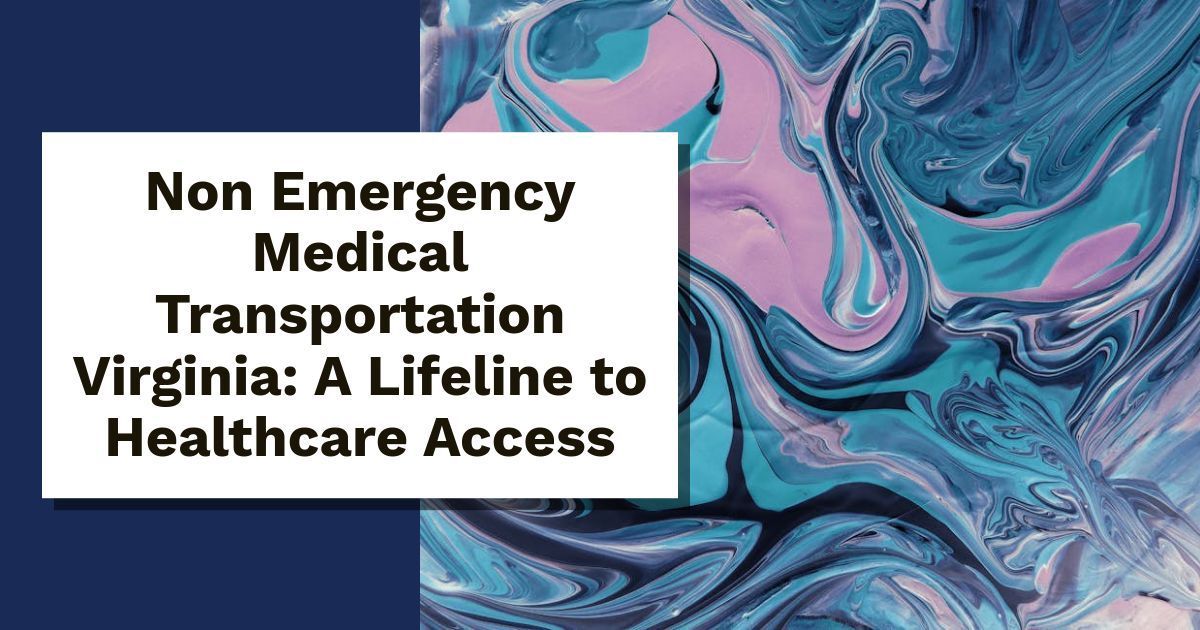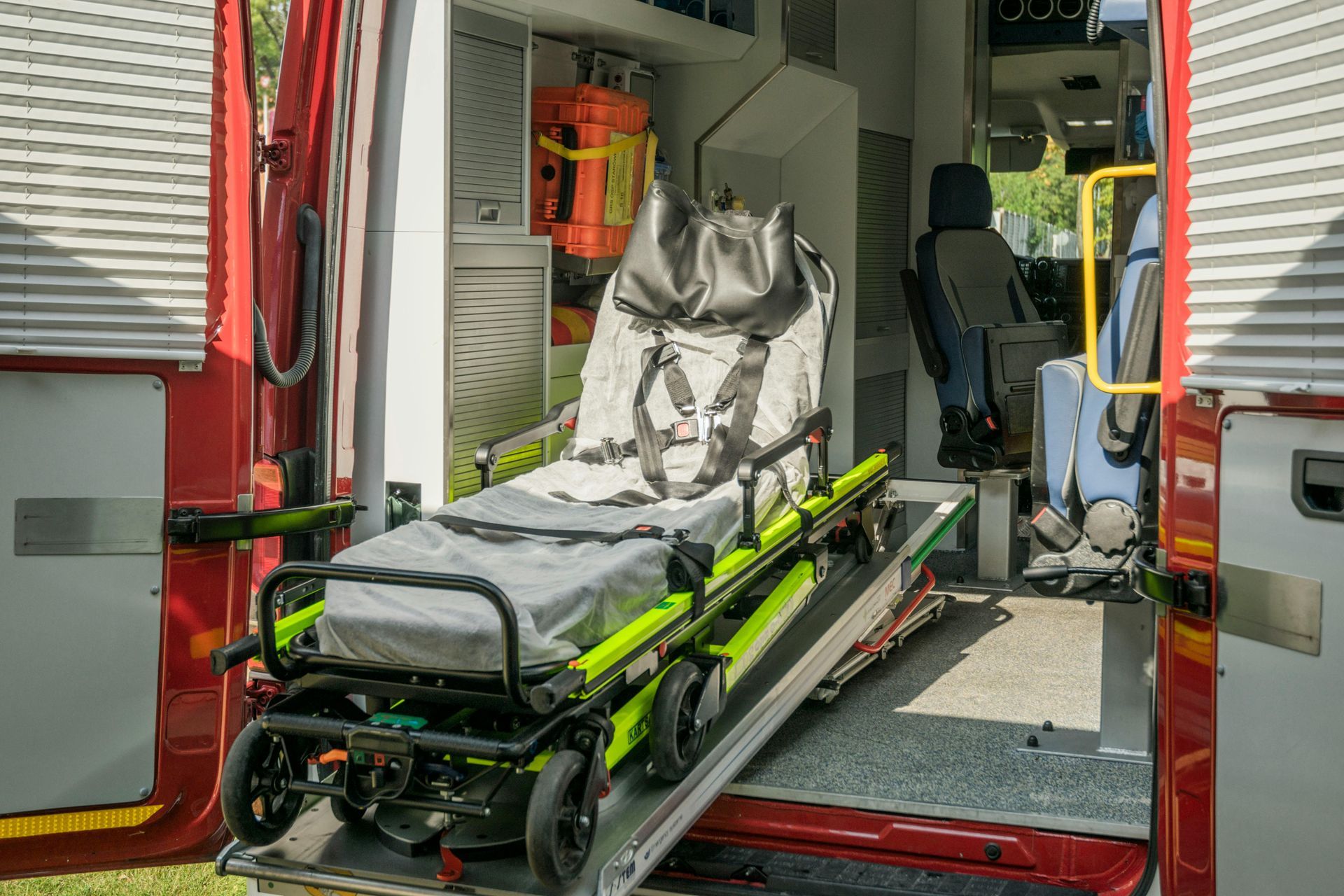Transport for Wheelchair Patients: Crucial Steps to Safety
Ensuring safe and
accessible transportation for wheelchair patients involves overcoming challenges like proper accessibility, secure wheelchair restraints, comfortable seating positions, and reliable emergency evacuation. The first step towards achieving this is by selecting and modifying a suitable vehicle equipped with features such as ramps or lifts, and implementing robust safety systems and procedures.

Transport for Wheelchair Patients:
Crucial Steps to Safety
Transportation tends to significantly influence the lives of wheelchair patients, opening the gates to essential healthcare services, academic institutions, and the diverse range of daily activities that paint the colors of life. Yet, within this realm of mobility, it's crucial to pay heed to the safety aspect. This article will navigate the labyrinth of safe and secure transport for wheelchair patients, shedding light on key steps towards achieving this goal.
Understanding the Challenges
The task of transporting wheelchair patients is spiked with some unique challenges that need to be skillfully navigated to ensure their safety. These challenges often encompass a multitude of dimensions including:
- Accessibility: Wheelchair users need vehicles and infrastructure that are tailored to their needs, enabling them to board and alight safely with minimal difficulty.
- Secure Wheelchair Restraints: Wheelchair restraints that are secure and reliable are a must to prevent any untoward movement or tipping during transportation, ensuring a smooth and safe journey.
- Proper Seating Position: Wheelchair patients need to be seated in a secure and comfortable position, with seat belts or harnesses that are appropriately fitted, to minimize the risk of injury in case of sudden stops or accidents.
- Emergency Evacuation: Emergencies such as fires or accidents necessitate robust evacuation procedures to ensure the safe and quick exit of wheelchair patients.
The Road to Safe Transport: Crucial Steps
To build a stronghold of safety for wheelchair patients during transportation, there are several steps that ought to be implemented:
Vehicle Selection and Modification: The First Step
The journey towards safe transportation for wheelchair patients begins with selecting the perfect vehicle.
Key considerations include:
- Accessibility: The vehicle should come equipped with ramps or lifts to facilitate easy boarding and alighting.
- Interior Space: It's important to check the vehicle for sufficient interior space to accommodate the wheelchair and other passengers without discomfort.
- Wheelchair Restraints: The vehicle should have secure wheelchair restraints in place, such as four-point tie-down systems or automatic docking systems, to prevent movement or tipping.
Professional Training for Drivers and Attendants: The Second Step
Drivers and attendants who are in charge of transporting wheelchair patients should receive professional training to effectively handle their special needs.
This training should encompass:
- Wheelchair Securement: Techniques for securely fastening wheelchairs to prevent any movement during transportation.
- Emergency Procedures: Training on emergency evacuation procedures, including how to safely transfer wheelchair patients to a designated safe area.
- Sensitivity Training: Promoting understanding and empathy towards wheelchair patients to foster a supportive and inclusive transportation environment.
Regular Vehicle Maintenance and Inspections: The Third Step
It is essential to perform regular maintenance and inspections on transport vehicles to guarantee their safety and reliability.
Key maintenance tasks include:
- Wheelchair Restraints: Regular inspection and testing of the wheelchair restraints to ensure they are functioning properly and not worn out.
- Vehicle Accessibility Features: Regular checks on ramps, lifts, and other accessibility features to ensure they are functioning as they should.
- Seat Belts and Harnesses: Routine checks on seat belts and harnesses to make sure they are in good condition and provide the necessary security for wheelchair patients.
Clear Communication and Documentation: The Fourth Step
To keep the transportation process seamless and efficient, clear communication and proper documentation are absolutely critical.
Some steps to consider are:
- Patient Information: Collecting detailed information about the patient, including any specific requirements or medical conditions that may affect their transport.
- Communication Channels: Establishing strong communication channels between transportation providers, caregivers, and healthcare professionals to address any concerns or updates promptly.
- Transportation Log: Keeping a detailed transportation log that documents each trip's date, time, pick-up, drop-off locations, and any noteworthy incidents or observations.
Emergency Preparedness: The Final Step
Being prepared for emergencies is paramount in any transportation setting.
For wheelchair patients, certain considerations should be made:
- Evacuation Plan: Developing an evacuation plan tailored to wheelchair patients and practicing it regularly to ensure a safe exit during emergencies.
- Emergency Contact Information: Keeping an up-to-date list of emergency contact information for all wheelchair patients, caregivers, and healthcare providers involved in their transportation.
Key Takeaways
- Accessibility is crucial for wheelchair users, including vehicles and infrastructure tailored to their needs.
- Secure wheelchair restraints are necessary to prevent movement or tipping during transportation.
- Proper seating position with fitted seat belts or harnesses minimizes the risk of injury in sudden stops or accidents.
- Robust evacuation procedures are necessary for emergencies to ensure the safe exit of wheelchair patients.
- Vehicle selection and modification should consider accessibility, interior space, and wheelchair restraints.
- Professional training for drivers and attendants should cover wheelchair securement, emergency procedures, and sensitivity training.
- Regular maintenance and inspections of vehicles, wheelchair restraints, accessibility features, seat belts, and harnesses are essential.
- Clear communication and documentation, including patient information and communication channels, are critical for seamless transportation.
- Emergency preparedness should include an evacuation plan and up-to-date emergency contact information.
The transportation journey for wheelchair patients is a multifaceted experience, and to ensure seamless and secure travel, it is important to delve deeper into the system's intricacies. The article has provided a clear roadmap to build a safe transport environment for these individuals, but it's also worth noting the importance of societal collaboration in this context.
One key perspective to consider is the role of technology. Although this has been touched upon in the reference to vehicle modifications, the scope extends much further. Innovative solutions such as GPS tracking systems can provide real-time updates about the patient’s whereabouts, enhancing their safety during transit. Additionally, the use of apps can facilitate communication between healthcare professionals and transport providers, ensuring that patient needs are met promptly and effectively.
Secondly, it's essential to highlight the importance of societal empathy and awareness. While sensitivity training for drivers and attendants is a step in the right direction, a broader societal understanding is crucial. Public education campaigns and initiatives can play a significant role in fostering this empathy, facilitating an inclusive environment for wheelchair patients.
Lastly, it's crucial to recognize that the journey towards safe transport for wheelchair patients extends beyond the duration of the trip. Before the journey begins and after it ends, elements such as safe pathways and accessible infrastructure are key to ensuring a comprehensive safety protocol. By focusing not just on the journey but also on the pre- and post-transport stages, we can significantly enhance the safety and comfort of wheelchair patients.
Leveraging these insights allows for a more nuanced understanding of safe transport for wheelchair patients, highlighting the need for technological advancement, societal empathy, and a comprehensive approach to safety.
Conclusion
The endeavour of providing safe transportation for wheelchair patients demands meticulous planning, an apt choice of vehicle, and comprehensive training for drivers and attendants. By addressing accessibility issues, ensuring secure wheelchair restraints, and implementing emergency preparedness measures, we can sculpt a transportation environment that prioritizes the safety and well-being of wheelchair patients.
United, we can strive to make transportation a space that is inclusive and accessible for all.
FAQ
What are the challenges in transporting wheelchair patients?
The challenges in transporting wheelchair patients include accessibility, secure wheelchair restraints, proper seating position, and emergency evacuation procedures.
What are the crucial steps for safe transport of wheelchair patients?
The crucial steps for safe transport of wheelchair patients are vehicle selection and modification, professional training for drivers and attendants, regular vehicle maintenance and inspections, clear communication and documentation, and emergency preparedness.
What should be considered in vehicle selection and modification?
Vehicle selection and modification should consider accessibility, interior space, and wheelchair restraints such as four-point tie-down systems or automatic docking systems.
What should professional training for drivers and attendants cover?
Professional training for drivers and attendants should cover wheelchair securement, emergency procedures, and sensitivity training.
Why is regular vehicle maintenance and inspections important?
Regular vehicle maintenance and inspections are important to ensure the safety and reliability of transport vehicles, including wheelchair restraints, accessibility features, seat belts, and harnesses.
Why is clear communication and documentation critical?
Clear communication and documentation are critical for seamless transportation, including collecting patient information, establishing communication channels, and keeping a detailed transportation log.
What should be included in emergency preparedness for wheelchair patients?
Emergency preparedness for wheelchair patients should include an evacuation plan tailored to their needs and up-to-date emergency contact information for all parties involved in their transportation.






